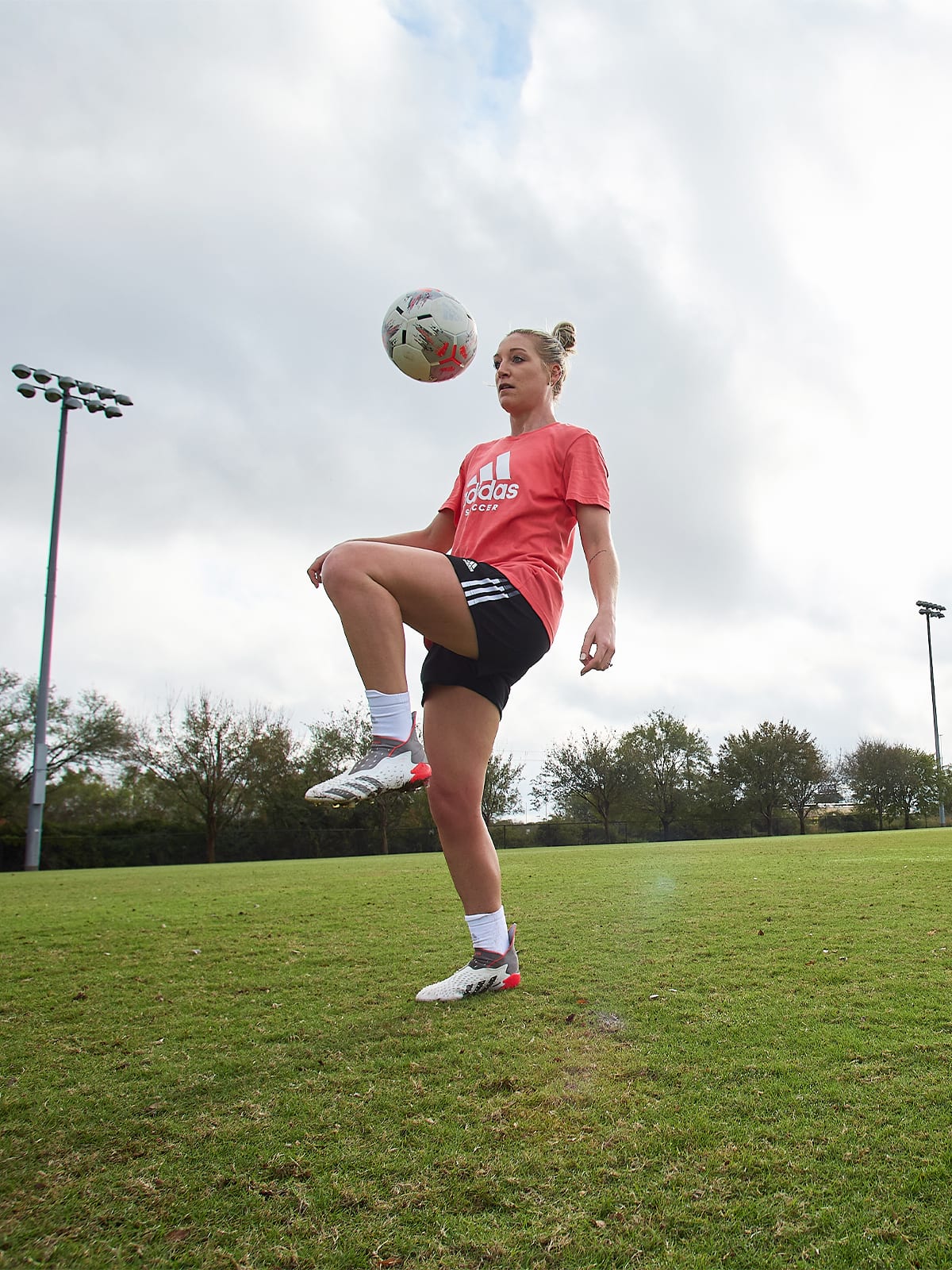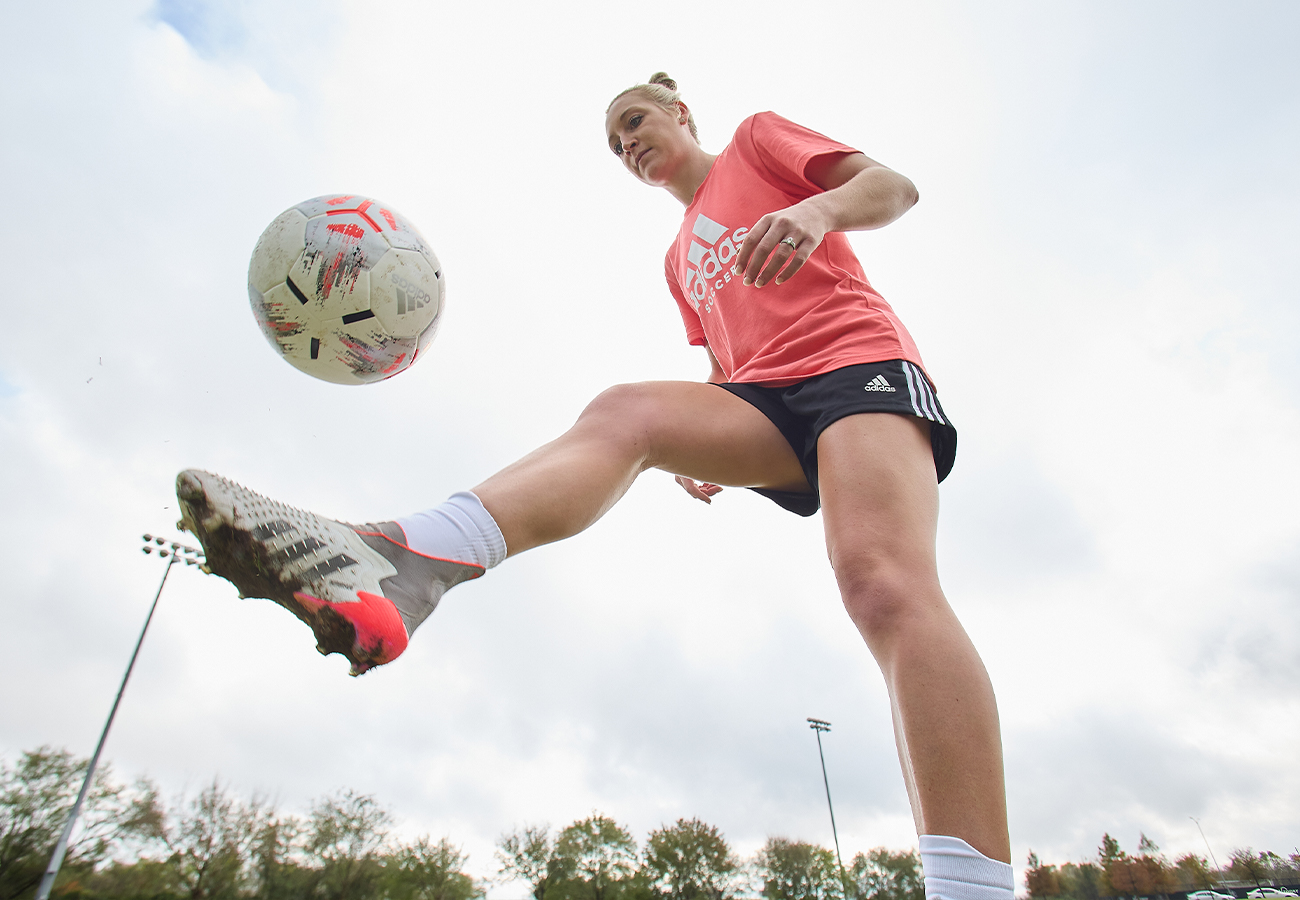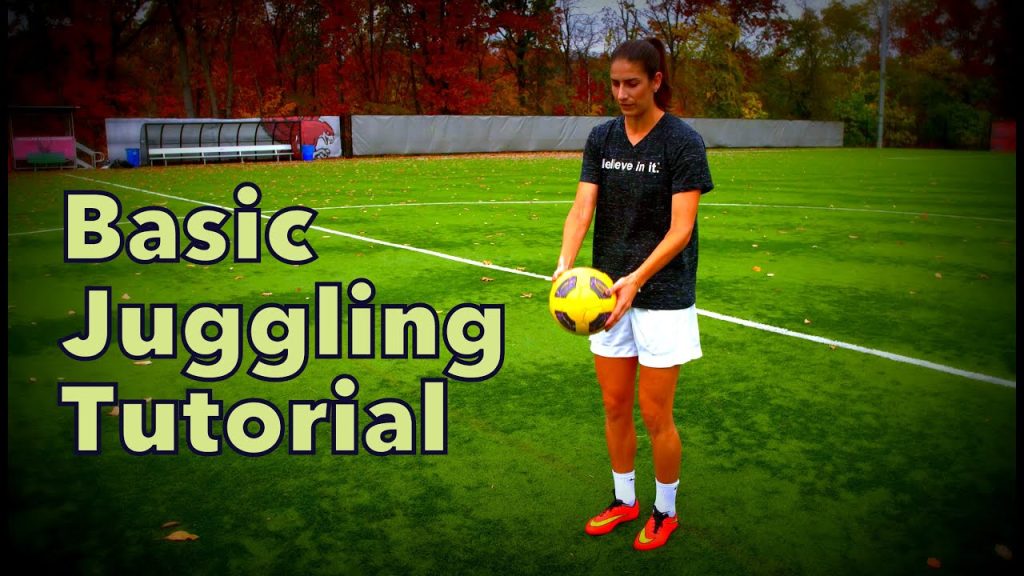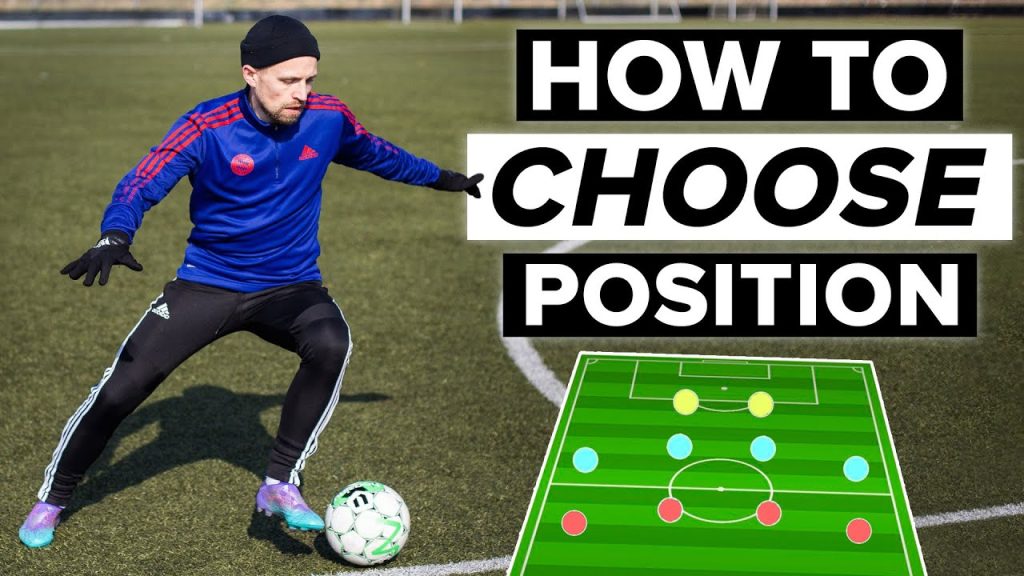Juggling a soccer ball is a fun skill to learn. It helps improve control and coordination.
Soccer juggling is a great way to boost your ball-handling skills. Whether you’re a beginner or experienced player, juggling can enhance your game. It’s a simple yet effective practice that you can do almost anywhere. Learning to juggle a soccer ball takes patience and practice, but the results are worth it.
You’ll notice improvements in your touch and balance. Plus, it’s a great workout for your legs and core. Ready to take your soccer skills to the next level? Let’s dive into the basics of soccer juggling and get you started on mastering this impressive skill!
Introduction To Juggling
Juggling a soccer ball is a fundamental skill in soccer. It helps players develop better control over the ball. This skill can be tricky at first, but with practice, anyone can learn it. In this section, we will introduce the concept of juggling and why it is important.
What Is Juggling?
Juggling is the act of repeatedly kicking a soccer ball in the air. The goal is to keep the ball from touching the ground. Players use their feet, thighs, chest, and head. It requires focus and coordination. Beginners often start with their feet and then add other body parts.
Benefits Of Juggling
Juggling improves ball control. It helps players feel more comfortable with the ball. This skill is crucial during matches. Players with good ball control can make better passes and shots.
Juggling also enhances coordination. It forces players to use different parts of their body. This helps in developing overall soccer skills. Consistent practice can lead to better performance on the field.
Additionally, juggling builds concentration. It requires a lot of focus. This can be beneficial during high-pressure situations in a game. Players who juggle regularly are often more confident.

Credit: www.adidas.com
Choosing The Right Soccer Ball
Choosing the right soccer ball is essential for learning how to juggle. The ball’s size, weight, and material can impact your juggling experience. Let’s explore these factors to help you pick the best soccer ball for juggling practice.
Ball Size And Weight
Soccer balls come in different sizes. For juggling, a size 4 or 5 ball is ideal. Size 4 balls are smaller and lighter. This makes them easier to control. Size 5 balls are standard for adults. They are slightly heavier and larger. Choose a size that feels comfortable. The ball’s weight also affects juggling. Lighter balls are easier to lift. Heavier balls require more strength. Practice with both to find your preference.
Ball Material
The material of a soccer ball affects its bounce and feel. Common materials include synthetic leather and rubber. Synthetic leather balls offer better touch and control. They are durable and provide a consistent bounce. Rubber balls are more affordable. They tend to be less durable but still good for practice. Check the ball’s outer texture. A smoother surface can be harder to control. A textured surface provides better grip.
Warm-up Exercises
Warm-up exercises are essential before practicing how to juggle a soccer ball. They help to prepare your body and mind for the activity. These exercises can improve your flexibility, coordination, and focus.
Stretching Techniques
Stretching is important to prevent injuries and increase flexibility. Start with a light jog for a few minutes. This increases blood flow to your muscles. Then, perform dynamic stretches like leg swings and arm circles. These stretches should target your legs, hips, and lower back.
Next, do some static stretches. Hold each stretch for 20-30 seconds. Focus on your hamstrings, quads, calves, and groin. Remember to breathe deeply and relax your muscles while stretching.
Basic Ball Handling
Basic ball handling skills are crucial for juggling. Begin with simple touches using the inside and outside of your feet. Practice tapping the ball gently back and forth between your feet. This helps to develop control and touch.
Next, practice rolling the ball with the sole of your foot. This improves your ability to manipulate the ball. Try to keep the ball close to your body. Repeat these exercises for a few minutes to build muscle memory.
Finally, practice bouncing the ball on your thighs. Start by gently tossing the ball and catching it with your thigh. Alternate between your right and left thigh. This exercise helps to improve balance and coordination.
Basic Juggling Techniques
Learning to juggle a soccer ball is a fun way to improve your skills. It helps with ball control and coordination. To get started, you need to learn some basic juggling techniques. These techniques will build your foundation and make you a better player.
Foot Placement
Proper foot placement is key to juggling a soccer ball. Start by placing your non-juggling foot firmly on the ground. Keep your juggling foot slightly bent at the knee. This helps you balance and control the ball better.
Make sure your toes are pointing slightly upwards. This gives you a larger surface area to make contact with the ball. Keep your feet relaxed but ready to move quickly.
Using The Laces
Using the laces of your shoes is another important technique. The laces provide a flat surface for better control. When the ball makes contact with the laces, it bounces back evenly.
To practice, try tapping the ball gently with the laces. Aim to keep the ball low and controlled. This helps you maintain balance and improves your touch.
Repeat these steps until you feel comfortable. Over time, your juggling skills will improve.
Advanced Juggling Moves
Advanced juggling moves can elevate your soccer skills to new heights. These moves require precision, practice, and a good sense of rhythm. Let’s explore two exciting advanced juggling tricks: Around the World and The Rainbow.
Around The World
Around the World is a classic juggling move. Start by juggling the ball normally. Next, kick the ball up with your dominant foot. As the ball rises, circle your foot around it. Complete the circle before the ball drops. Catch the ball on your foot and continue juggling. This move tests your timing and coordination.
The Rainbow
The Rainbow is a flashy and fun trick. Begin with the ball between your feet. Roll the ball up the back of one leg. Use the other foot to flick the ball over your head. The ball should arch like a rainbow. This move impresses and entertains. Practice makes perfect with the Rainbow.
Mastering these advanced juggling moves will boost your confidence. Keep practicing, and you’ll amaze your friends with your skills.

Credit: www.adidas.com
Common Mistakes To Avoid
Juggling a soccer ball is a skill that takes practice and patience. Many beginners make common mistakes that can hinder their progress. By identifying and avoiding these mistakes, you can improve your juggling skills more effectively.
Improper Foot Position
One common mistake is the improper foot position. Always use the top of your foot, not the toes. This helps you control the ball better. Keep your ankle locked and your foot flat. This creates a larger surface area to juggle the ball. Avoid using the sides of your foot. This can make the ball go in unexpected directions. Practice with both feet to gain better control.
Lack Of Focus
Focus is crucial when juggling a soccer ball. Many players get distracted easily. This often leads to losing control of the ball. Keep your eyes on the ball at all times. Concentrate on each touch. Clear your mind of other thoughts. Distractions can break your rhythm. Practice in a quiet place to improve your focus. Remember, consistent practice builds better concentration.
Training Drills
Training drills are essential for improving your soccer juggling skills. These drills help you build control, coordination, and confidence. Both solo and partner drills can be effective. Practice regularly to see improvement. Let’s explore some useful training drills.
Solo Drills
Practicing alone helps you focus on your technique. Here are some solo drills:
- Basic Juggling: Start by kicking the ball with your dominant foot. Keep it low. Use both feet once you’re comfortable.
- Alternating Feet: Juggle the ball by alternating between your left and right foot. This improves balance and control.
- High Knees Juggling: Lift your knees high while juggling. This drill enhances coordination and leg strength.
- Wall Juggling: Kick the ball against a wall and juggle the rebound. This helps with reaction time and precision.
Partner Drills
Training with a partner adds a fun and competitive element. Here are some partner drills:
- Pass and Juggle: Pass the ball to your partner who then juggles it back to you. This drill improves passing accuracy and control.
- Keep It Up: Try to keep the ball in the air between you and your partner. This drill fosters teamwork and communication.
- Challenge Juggling: Set a target number of juggles. Each player takes turns to reach that number. This creates a competitive yet friendly environment.
- Two-Touch Juggling: Each player is allowed only two touches before passing the ball. This drill enhances quick decision-making and control.
Both solo and partner drills are essential for mastering soccer juggling. Regular practice and dedication will lead to significant improvements.
Improving Ball Control
Improving ball control is essential for juggling a soccer ball. It helps in building your skills and enhancing overall gameplay. Better control allows you to keep the ball in play and perform tricks efficiently. Let’s explore some key aspects to improve your ball control.
First Touch Mastery
Your first touch is crucial. It sets the tone for your juggling session. Focus on cushioning the ball with the top of your foot. This reduces the ball’s speed and keeps it close. Practice with both feet to become more versatile.
Keeping The Ball Close
Maintaining close control is vital in juggling. Keep the ball close to your body. This gives you better command and quick reactions. Use small, controlled touches to keep the ball in a tight space. This helps in improving your overall ball control and confidence.
Mental Focus And Concentration
Juggling a soccer ball is not just about physical skill. It also requires mental focus and concentration. Mental preparation can make a huge difference. Let’s explore how to stay calm and use visualization techniques to improve your juggling skills.
Staying Calm
Staying calm is crucial in soccer ball juggling. A calm mind helps in better control and precision. Here are some simple tips to stay calm:
- Take deep breaths. This helps relax your mind and body.
- Focus on one touch at a time. Don’t think too far ahead.
- Practice regularly. Familiarity with the ball builds confidence.
Visualization Techniques
Visualization can enhance your soccer juggling skills. Imagine yourself successfully juggling the ball. This mental practice prepares you for real action.
Here are some effective visualization techniques:
- Close your eyes. Picture yourself juggling the ball smoothly.
- Visualize each move. See the ball touch your foot and bounce back.
- Repeat positive affirmations. Tell yourself you can do it.
Combining calmness and visualization can significantly improve your juggling. Practice these mental techniques daily. Notice the difference in your performance.
Practice Routine
Practicing how to juggle a soccer ball can be fun and rewarding. It helps improve your control and coordination. Establishing a practice routine is key to mastering this skill. Consistency and dedication are essential. Here’s how you can structure your practice routine.
Daily Schedule
Start with a daily schedule. Commit to practice at the same time each day. This helps build a habit. Begin with a warm-up. Stretch your legs and arms for five minutes. This prepares your body for the exercise. Then, spend 15 minutes juggling the soccer ball. Try to keep the ball in the air as long as possible. If you drop it, pick it up and start again.
Gradually increase your juggling time. Add five more minutes each week. This helps you build endurance. Stay focused during practice. Avoid distractions like your phone or TV. Consistent practice leads to improvement.
Tracking Progress
Tracking your progress is essential. Keep a journal of your daily practice. Write down how many juggles you complete each session. Note any improvements or challenges. This helps you see your growth over time.
Set short-term goals. For example, aim to juggle the ball 10 times without dropping. Once you achieve this, set a new goal. Gradually increase the difficulty. Celebrate small victories to stay motivated.
Review your progress each week. Look for patterns or areas that need improvement. Adjust your practice routine accordingly. Consistent tracking helps you stay on track and motivated.

Credit: www.youtube.com
Frequently Asked Questions
What Is The Best Way To Start Juggling?
Start juggling with your dominant foot first. Use small, controlled touches. Keep the ball low to maintain control.
How Can I Improve My Juggling Skills?
Practice regularly to improve your juggling skills. Focus on controlling the ball with both feet. Gradually increase the number of juggles.
How Do I Keep The Ball From Falling?
Keep your eyes on the ball while juggling. Use soft, controlled touches. Maintain a balanced stance to prevent the ball from falling.
Should I Use My Thighs To Juggle?
Yes, using your thighs can help. It provides more control and helps maintain rhythm while juggling the soccer ball.
Conclusion
Juggling a soccer ball can be fun and rewarding. Practice regularly to improve. Start with small goals and build up. Don’t get discouraged by mistakes. Keep your eyes on the ball. Focus on your feet’s movement. Over time, you will see progress.
Enjoy the process and stay patient. Happy juggling!


